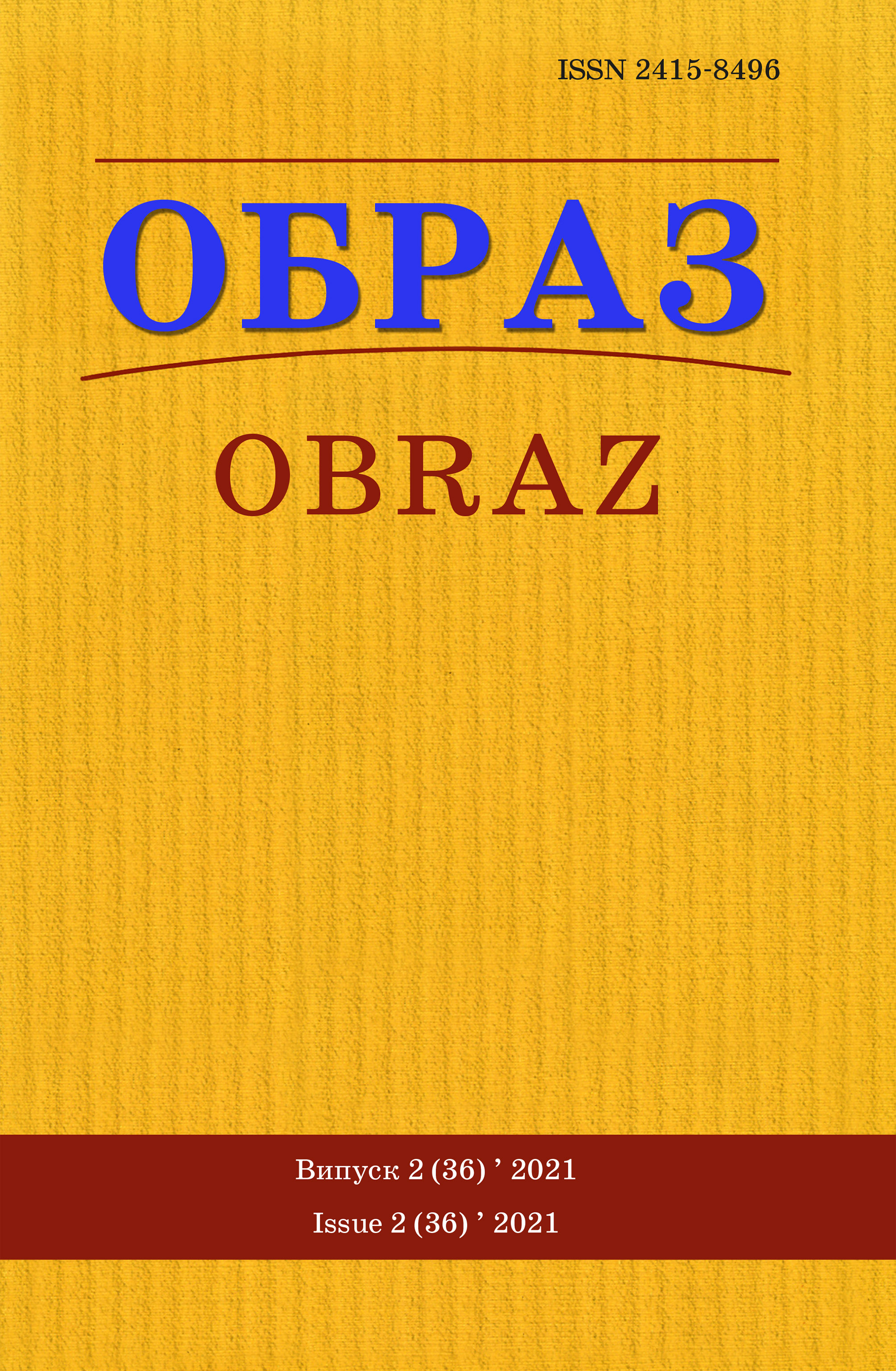Abstract
Introduction. Literary criticism is closely connected with literature, culture, mass media. It is an important part of the communication system of society. New information technologies have caused changes within literary criticism. The topicality of the research is determined by the need to rethink the classical approaches to defining the concept, objectives, and functions of literary criticism, which has undergone significant transformations in recent decades. The main objective of the study is to highlight the concept of literary criticism and to define the current tasks, functions of literary criticism as a subsystem of social communications. Methodology. Following research methods were used in this article – analysis, synthesis, interpretation, abstraction, system and comparative analysis, induction and deduction, generalization. With the help of these methods, the dynamics of changes of literary criticism in media space are researches, the characteristic features of literary criticism as a subsystem of social communications are determined. Results. The author analyzes the main approaches to defining the concept of literary criticism. Actual tasks, forms, and functions of literary criticism in the media space are studied. The author concludes that regulatory and educational functions of literary criticism become less important than functions of marketing, communication, information, and filtering. The analysis allowed us to find out which transformational processes modern literary criticism undergoes. And how the author and the form of literary-critical materials change. The characteristic features that literary criticism acquires as a subsystem of social communications are highlights. Conclusions. Modern literary criticism goes beyond traditional definitions and acquires new features. At the level of professional criticism, there is amateur criticism. The approach to the submission of materials is changing.
References
1. Baldick, C. (2001), The Concise Oxford Dictionary of Literary Terms, Oxford University Press, New York, 280 p.
2. Bertrand, I. & Hughes, P. (2005), Media Research Methods. Audiences, Institutions, Texts, Basinstoke, New York, 286 p.
3. Crews, F.С., «Literary Criticism», available at: https://www.britannica.com/art/literarycriticism (accessed 13 September 2021).
4. Danesi, M. (2009), Dictionary of Media and Communication, M. E. Sharpe, Armonk, New York, London, 333 p.
5. Kristensen, N. & From, U. (2015), «Cultural journalism and cultural critique in a changing media landscape», Journalism Practice, no. 9 (6), pp. 760–772.
6. Stanková, M. (2020), «Literary criticism – from hero to zero?», in Kvetanova, Z., Solik, M. (Eds.), Proceedings of the International Scientific Conference «Megatrends and Media: On the Edge», Faculty of Mass Media Communication, University of Ss. Cyril and Methodius in Trnava, Trnava, 22 April 2020, Trnava, pp. 622–627.
7. Stanková, M. (2021), «Online literary criticism: when reader becomes critic», European Journal of Media, Art & Photography, vol. 9, no. 1, pp. 128–135.
8. Wellek, R. (1963), Concepts of criticism, in Nichols S.G. (Ed.), Yale University Press, New Haven, 420 p.
9. Bart, R. (1989), Selected Works: Semiotics. Poetics, Progress, Moscow. 616 p.
10. Biletskyi, L. (2017), «Criticism and writer», in Donchyk, V. (Ed.), Ukrainian Literary Criticism of the XX Century. Anthology in Two Volumes. Volume One: Literary Discussions of the First Half of the XX Century, Naukova dumka, Kyiv, vol. 1, pp. 625–634.
11. Briukhovetskyi, V.S. (1984), The Forces Field of Criticism, Radjansjkyj pysjmennyk, Kyiv, 240 p.
12. Halych, O.A. (2013), A History of Literary Criticism, Lybidj, Kyiv, 390 p.
13. Gusev, A.V. (2012), «Literary criticism and modern mass media», Naukovi zapysky Kharkivsjkogho nacionaljnogho pedaghoghichnogho universytetu im. Gh. S. Skovorody. Ser.: Literaturoznavstvo [Naukovi zapiski HNPU imeni G. S. Skovorodi Literaturoznavstvo], iss. 1 (2), pp. 34–39.
14. Mykhajlyn, I.L. (Ed.) (2013), Journalism: Dictionary-Directory, Akademvydav, Kyiv, 320 p.
15. Zdoroveha, V. (2004), Theory and Methods of Journalistic Creativity: a Textbook, 2nd ed., PAIS, Lviv, 268 p.
16. Kompanon, A. (2001), The Demon of Theory: Literature and Common Sense, Izd-vo Sabashnikovykh, Moscow, 336 p.
17. Chytomo (2015), «Criticism against literature: irreconcilable friends», available at: http:// archive.chytomo.com/news/kritika-proti-literaturi-neprimirenni-druzi (accessed 13 September 2021).
18. Chytomo (2016), «Literary criticism or how to keep the Ukrainian book in shape», available at: http://archive.chytomo.com/news/literaturna-kritika-abo-yak-trimati-v-tonusi-ukraiinskuknizhku (accessed 13 September 2021).
19. Kovaliv, Yu. (Ed.) (2007), The Literary Encyclopedia, VC «Akademija», Kyiv, vol. 1, 624 p.
20. Hromiak, R.T. (Ed.) (2007), The Literary Dictionary-Directory, 2nd ed., Akademija, Kyiv, 752 p.
21. Mykhajlyn, I.L. (2011), Basics of Journalism: a Textbook, 5nd ed., Centr uchbovoji literatury, Kyiv, 496 p.
22. Pocheptsov, H.H. (2019), Glamor 2.0. TV Series, Mass Culture and Social Media as Creators of Virtual Reality, Folio, Kharkiv, 410 p.
23. Rizun, V.V. (2010), «On the question of the social-communication approach in science», Komunikacija [Communication], no. 1, pp. 27–37.
24. Sent-Bev, Sh. (1970), Literary Portraits. Critical Essays, Khudozhestvennaya literatura, Moscow, 582 p.
25. Morozov, S.M. & Shkaraputa, L.M. (Eds.) (2000), Dictionary of Foreign Words, Naukova dumka, Kyiv, 680 p.
26. Shestopalova, T.P. (2014), «Literary criticism and the history of Ukrainian literary criticism in scientific terms and research perspectives», Literaturnyj proces: metodologhija, imena, tendenciji. Filologhichni nauky [Literary Process: Methodology, Names, Trends], no. 3, pp. 120–124.

This work is licensed under a Creative Commons Attribution 4.0 International License.

